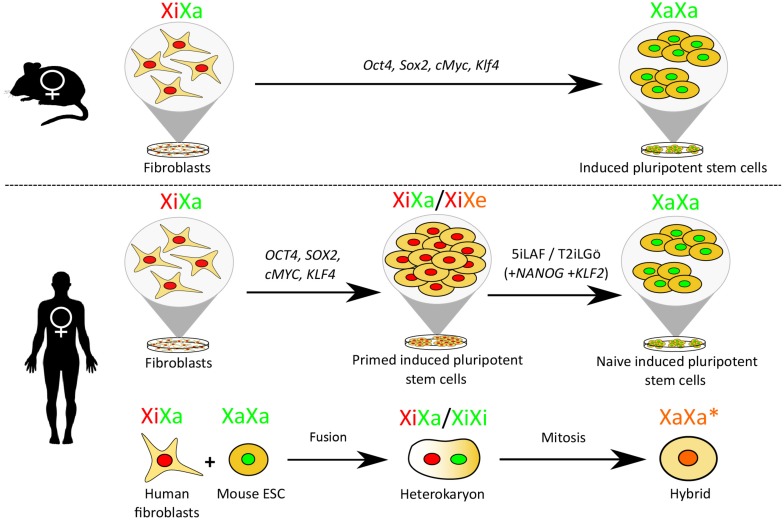FIGURE 1.
XCR during female mouse and human iPSC reprogramming and following cell fusion. Mouse fibroblasts induced to a pluripotent state by the upregulation of Oct4, Sox2, cMyc, and Klf4 activate their Xi. Human fibroblasts converted to the primed pluripotent state by upregulating OCT4, SOX2, cMYC, and KLF4 do not undergo XCR, further reprogramming to the naïve state using a naïve conversion media [e.g., 5iLAF (which contains inhibitors that target the glycogen synthase kinase-3 (GSK3b), the mitogen-activated protein kinase (MEK), the Rho-associated, coiled-coil containing protein kinase (ROCK), the serine/threonine-protein kinase B-Raf (BRAF) and the proto-oncogene tyrosine-protein kinases (SRC), in addition to human leukemia inhibitor factor (LIF), activin A and fibroblast growth factor (FGF) (Theunissen et al., 2014)] or T2iLGö [which requires overexpression of KLF2 and NANOG in the presence of MEK, GSK-3, protein kinase C (PKC), ROCK inhibitor and human LIF (Takashima et al., 2014)] is required to induce XCR. Partial human XCR is also achievable through cell fusion, whereby a human fibroblast is fused to a mouse embryonic stem cell (mESC). Following mitosis, a hybrid cell is formed containing chromosomes from both mouse and human in which the human X chromosome is partially reactivated. Red nuclei = XiXa state, green nuclei = XaXa state, XaXa∗ = partially reactivated X, XiXe = eroded X.

